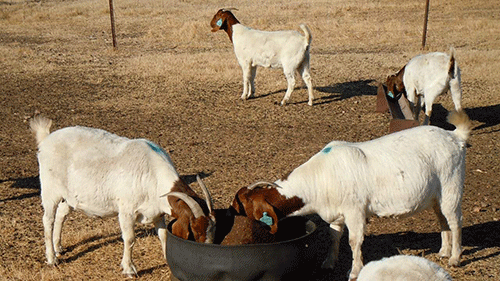Erastus Ngaruka
Many farming areas in Namibia have received a lot of rain compared to the previous seasons, recording above the usual annual averages. The rangeland productivity has improved in some areas, although the quality of the grazing materials is still not the finest.
However, the livestock’s body conditions are high (fat conditions). It should, however, be noted that the quantity and quality of the grazing materials the animals are eating now have an influence on their endurance until the next rainy season, which can also not be surely predicted.
Thus, farmers need to continuously ensure that their livestock survival and performances are not compromised. Since the normal dry season is approaching, there are specific challenges that farmers will face, which are associated with livestock nutrition, health and reproduction.
On the topic of nutritional supplementation, livestock require a sufficient supply of nutrients throughout the year as a response to seasonal changes in rangeland conditions and body demands. Grazing livestock such as cattle and sheep are the most vulnerable to nutritional deficiency, especially mineral deficiencies, because the soil-mineral concentration in sandy areas is beyond the grass root zones for uptake.
During the rainy season or the summer months, focus has been on mineral supplementation, with greater emphasis on phosphorus, as it is deficient in soils. Phosphorus plays a principal role in metabolism, amongst others, especially when animal feed intake is higher.
As winter approaches, the grass stops growing and goes into the dormancy period, where the nutrients are relocated to be stored in the root system as reserves for regrowth in the next season. During this time, grass is drying up and shedding seeds and, in the process, vitamin A and much of the protein is lost.
Therefore, farmers need to inoculate their animals with vitamin A, and provide protein lick supplements. One of the ingredients needed in the winter supplements is urea as it enhances the digestion of dry forage materials through increased population and strength of the rumen microorganisms responsible for digestion in ruminant animals.
Later in the dry season, the animal’s demand for energy increases as the grass plants become depleted or scarcer, or grazed to the maximum. Thus, energy supplements need to be added to the protein supplements, and in certain cases especially when there is a grazing shortage, roughage feeds or hay will be needed to fill the rumen.
Since many farmers have planted crops, they can cheaply use processed crop residues as dry season feed supplements.
Winter is also the period during which goats and sheep will be giving birth for some farmers.
This is a critical period that requires extra effort in ensuring that the birth processes are smooth, and that the lambs and kids survive. The biggest challenge is that the lambs and kids survive the cold conditions of the winter months. Thus, farmers need to start preparing shelters to keep the newborns warm.
These include houses, and digging pits and enclosures covered with heat-trapping material such as black plastic sheets. The cold conditions can also result in respiratory infections, mainly pneumonia (Pasteurellosis). Thus, the mothers must have been vaccinated already to pass the immunity to the young ones through milk (colostrum) at least in the first month, or the young can be vaccinated at least at two weeks of age.
In addition, the lambs and kids need sufficient milk and feeds (creep feeds) to generate heat to keep warm and maintain optimal growth. Therefore, mothers (ewes and does) need sufficient feeds to produce sufficient milk for the young.
Another challenge for the young ones will be parasites such as mites, fleas and lice. These parasites will compromise the health and growth potential of lambs and kids. They thus need to be controlled. One of the good methods of controlling such parasites is by dipping the young ones in an anti-parasitic dip solution. Furthermore, dirty (e.g. dusty, excessive dung) kraals will also pose health risks such as respiratory and eye infections and harbouring of parasites.
A clean, healthy and safe kraal environment plays a big role in the survival of lambs and kids. Therefore, all potentially harmful conditions need to be eliminated.
Your farm productivity depends on the animal, the environment and your management. A successful production cycle is the one where the animal is born and raised to survive until it reproduces or is marketed. Therefore, farmers need to develop appropriate management plans that are responsive to the conditions in their production environment. These include seasonal feed shortages, and prevailing health risks.
A closer and regular inspection of livestock will be needed to allow a quick response to any abnormality or change in livestock health and behavioural conditions.
-AgriBank
*Erastus Ngaruka is the Technical Advisor: Livestock and Rangeland at AgriBank Namibia


